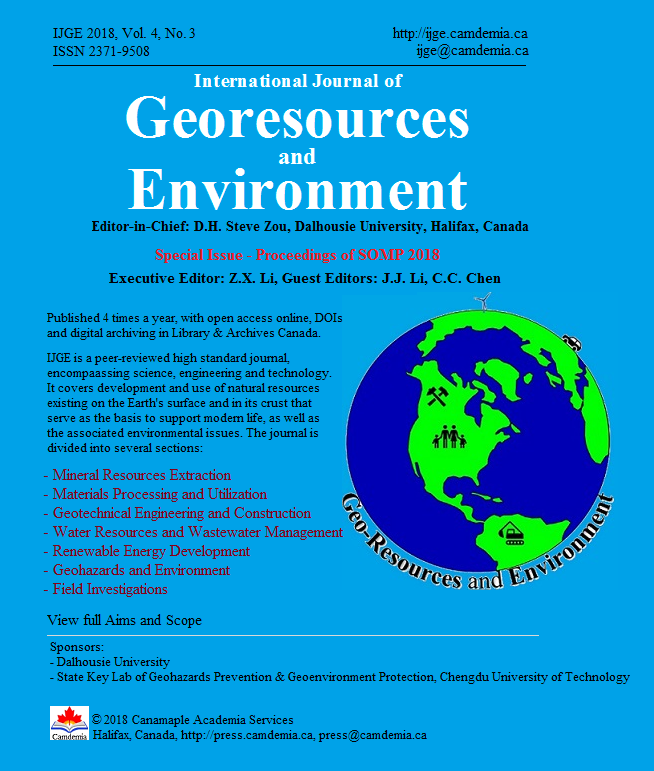A Framework for Research and Education on Artisanal and Small-Scale Mining in Latin America
DOI:
https://doi.org/10.15273/ijge.2018.03.017Keywords:
artisanal and small-scale gold mining (ASGM), mining-sustainable development, mining communities, social innovation, humanitarian engineeringAbstract
In Colombia, Peru, and other Latin American countries, different scales of mining activity usually develop in areas with high social, economic, and environmental complexity. Artisanal and small-scale gold mining (ASGM) is one mining sector that continues to grow and pose challenges for governments, industry, communities, and academics. Although numerous attempts have been made to intervene in this sector and implement cleaner, safer, and more environmentally friendly technologies, the majority of these initiatives have been relatively unsuccessful for they have been founded on myopic understandings of ASGM and the perspective that technology is a silver bullet for addressing the problems associated with ASGM. The complexity of ASGM warrants a different research approach. This paper provides an example of a framework that is being applied to research and engineering education on ASGM. The framework is highly interdisciplinary, international, inter-institutional, and intergenerational in nature. We contend that this type of approach is necessary to support ASGM in becoming a more sustainable livelihood for rural communities in the developing world.
Downloads
Published
Issue
Section
License
Copyright, Terms and Conditions
The International Journal of Geohazards and Environment (the Journal) is published by Canamaple Academia Services (the Publisher) online with open access, under a Creative Commons Attribution-Noncommercial license (CC-BY-NC) (http://creativecommons.org/licenses/by-nc/4.0/). Authors (the Authors) submitting papers (the Work) for publication in the Journal automatically agree to the following terms and conditions.
1. Under the license (CC-BY-NC), Authors give permission for others to share and reuse the Work, as long as the original source and author(s) are properly cited (i.e. a complete bibliographic citation and link to the Journal website) and the material is not used for commercial purposes. Any sharing or reuse must however indicate the original CC-BY-NC license terms of the work.
2. Authors transfer and assign to the Publisher all copyright in and to the Work. However Authors retain all proprietary rights except the copyright, related to the Work and also retain the rights a) to use, reproduce, distribute, and publicly display the Work in any medium in connection with the Authors‘ academic and professional activities, such as teaching, presentations and lectures, b) to create derivative works from the Work and to make full use of the Work in future research and publications, c) to authorize others to make any non-commercial use of the Work, d) to make both the pre-published and final-published versions available online in institutional and/or disciplinary repositories or on their own websites with a citation and link to the original paper published in the Journal.
3. Authors warrant that the Work is their original work, it is not copied from anywhere or anyone else, they are totally responsible for the authenticity, originality, validity and accuracy, and the facts and views are their own, that the Work contains no matter which is defamatory or infringes any literary or proprietary rights, intellectual property rights, or any rights of privacy, and that the Work has not been simultaneously submitted to any other journals or publishers. Authors further agree that their manuscripts whether accepted or rejected will not be returned and the rejected manuscripts will be disposed at the journal editor's discretion.
Disclaimer: The Publisher, the Journal and the editors accept no responsibility for statements or opinions expressed by authors. Use of information and materials in the Journal is the sole responsibility of users.


